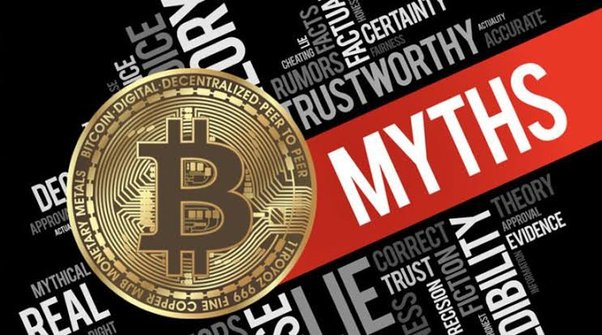What is the most common misconception about cryptocurrency that you always hear, and how best can it be corrected?

There are many misconceptions about how cryptocurrencies are used, abused and regulated. Among these are…
Myth #1: Crypto is anonymous and untraceable. 🔗
Cryptocurrencies operate on public, immutable ledgers known as blockchains. Anyone can look up the entire history of transactions of cryptocurrencies that use public blockchains, like Bitcoin. This means cryptocurrencies are more transparent than most traditional forms of value transfer. However, it’s difficult to know what services are behind transactions on the blockchain because they are pseudonymous.
It is technically possible to send and receive crypto without providing any personally identifying information, but the crypto addresses that a person uses are stored forever on the blockchain. And those addresses can often be linked to a service — like a cryptocurrency exchange — that will likely have personally identifiable information.
Chainalysis, the blockchain data platform, maps cryptocurrency addresses to their real-world services. This enables law enforcement agencies to follow illicit funds on the blockchains. Additionally, it helps financial institutions and cryptocurrency businesses monitor their platforms for suspicious transactions.
Chainalysis has mapped over 5,800 services so far. Monitors over 100 digital assets including Bitcoin, Ethereum, and the most popular ERC-20 tokens and stablecoins, representing over $200 billion worth of transactions per month. Analyzed more than $7 trillion in named value transacted,
Myth #2: Crypto is unregulated. 🔗
Anti-money laundering and combatting the financing of terrorism (AML/CFT) regulations for cryptocurrency are either already in place or are in the process of rolling out in jurisdictions around the world.
In the United States, cryptocurrency has been regulated under the Bank Secrecy Act since 2013. The Financial Crimes Enforcement Network (FinCEN), the bureau of the U.S. Department of the Treasury that collects and analyzes information about financial transactions, has likely put out more advisories and interpretive notes on cryptocurrencies than any agency in the world.
Internationally, the Financial Action Task Force (FATF), the inter-governmental body that sets global standards relating to anti-money laundering and combating the financing of terrorism comprising over 200 jurisdictions, issued recommendations for the regulation of virtual assets in 2019. These are now being implemented and applied around the world.
While clarity is continuing to be rolled out regarding specific aspects of the cryptocurrency space, there is an existing regulatory environment. Licensing and registration exists in many jurisdictions, which ties into supervision of the space.
Myth #3: Crypto is used primarily for illicit activity. 🔗
Like with many new technologies, criminals were early adopters of cryptocurrencies, and their initial embrace has helped shape its overall reputation.
Although today it is more well known that cryptocurrency is traceable, criminals still use it for the same reason people use crypto for legitimate purposes: it’s instantaneous, cross-border and liquid. One of the benefits of the transparency of cryptocurrency blockchains is that with the right tools, it’s possible to measure illicit activity. And it’s probably less frequent than most people believe.
The illicit share of all cryptocurrency activity was less than 1% in 2020, or $10.0 billion in transaction volume.
Scams make up the majority of all cryptocurrency-related crime, representing 54% of illicit activity — roughly $2.6 billion worth of cryptocurrency – in 2020.
Ransomware is the fastest-growing category of cryptocurrency crime. Known payments to ransomware attackers rose 337% from 2019 to 2020, when they reached over $400 million worth of cryptocurrency.


